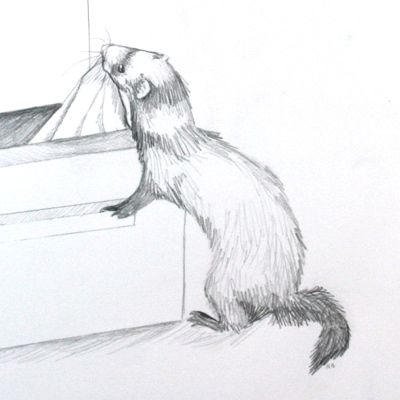Ferret drawing is a fun and creative way to capture the charm of your fuzzy friend. Whether you’re a beginner or an experienced artist, learning how to draw a ferret helps improve your anatomy and sketching skills. Explore techniques, tips, and ideas to bring your ferret art to life!
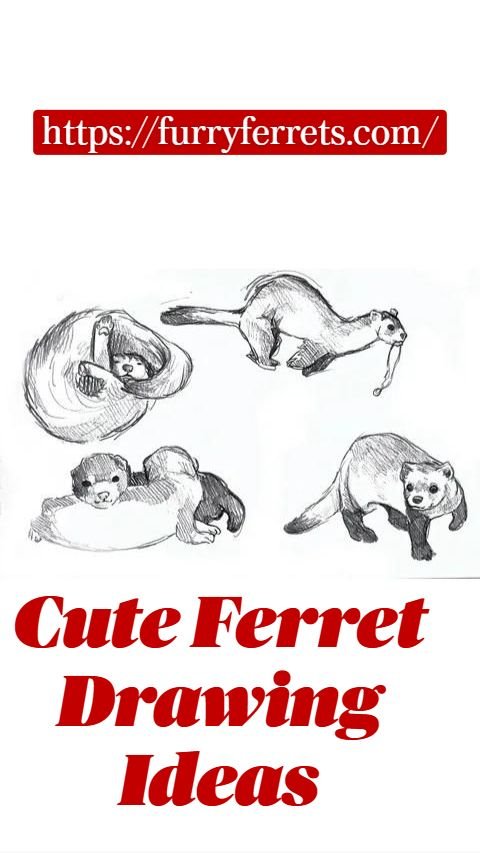
Introduction
Ferrets are curious, mischievous, and endlessly charming creatures. Their sleek bodies, bright eyes, and expressive faces make them fascinating pets—and equally wonderful subjects for artists of all skill levels. Whether you’re sketching for fun, practicing animal anatomy, or creating finished illustrations, learning how to draw ferrets will improve your technique and let you celebrate these delightful animals through your art.
In this detailed blopost guide, we’ll explore why ferrets are such great drawing subjects, how to approach drawing them step by step, common mistakes to avoid, and creative ideas to inspire your next ferret masterpiece.
Why Draw Ferrets?
Drawing ferrets is both fun and educational. Their long, flexible bodies and quick, fluid movements provide great practice for:
- Understanding animal anatomy: Ferrets challenge you to study proportions, skeletal structure, and how muscles shift in motion.
- Capturing dynamic poses: A ferret rarely sits still, so sketching them helps develop your ability to depict movement and energy.
- Developing your own style: Whether you lean realistic or cartoonish, ferrets’ expressive faces offer endless possibilities for personality and emotion in your art.
Plus, ferret drawings make adorable gifts, social media posts, or merchandise designs for pet lovers!
Getting Started: Observing Ferrets
Before you draw, spend time studying ferrets in photos and videos—or better yet, observe a real ferret if you can. Notice how their bodies stretch and coil, how they tuck their feet when curled up, and the subtle differences in their head and neck posture when alert versus relaxed. Pay attention to:
- The smooth curve of the spine
- The way their paws splay outward
- The proportion of their long tail to their body
- Their distinctive mask markings (if present)
These details will help you create believable, lively ferret drawings.
Step-by-Step Guide to Drawing a Ferret
1. Basic Shapes
Start by sketching the foundational shapes lightly in pencil:
- A small oval for the head.
- A long, curved cylinder or tube shape for the body.
- Four stubby cylinders for the legs.
- A tapering tail.
At this stage, focus on capturing the ferret’s characteristic slinky, serpentine posture.
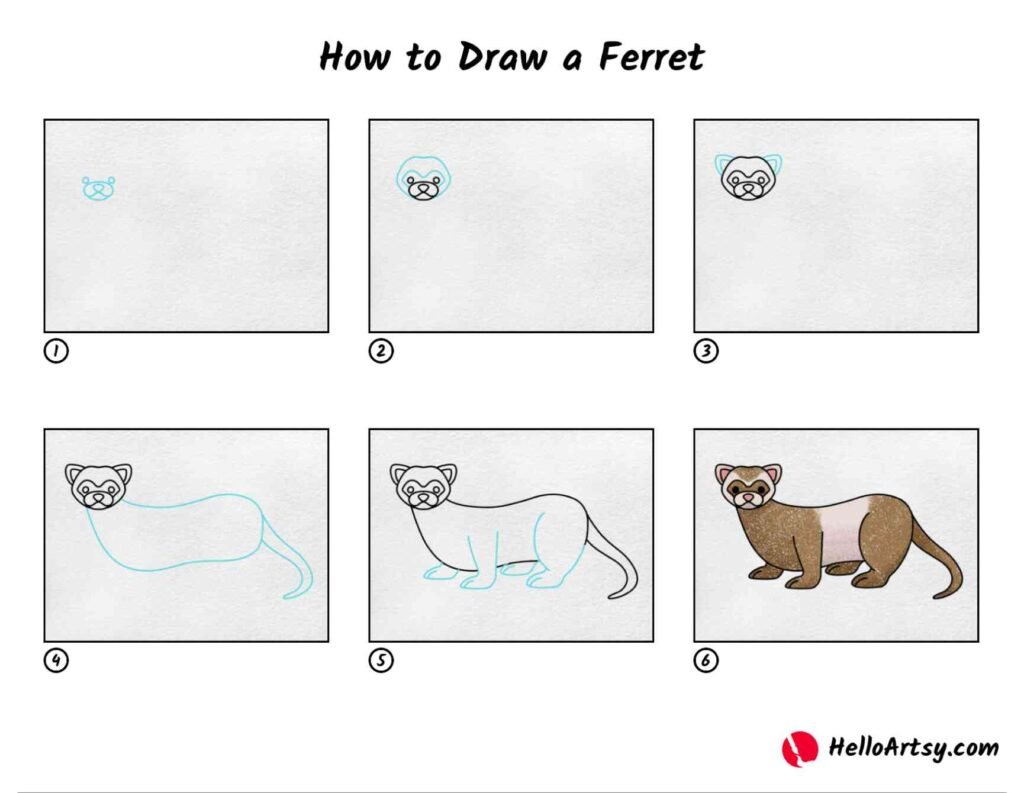
2. Facial Guidelines
Add a vertical guideline down the head oval to center the face. Mark horizontal lines for the eyes and nose. Sketch in circles for the eyes and a small triangle or rounded shape for the nose at the tip of the snout.

3. Refine the Silhouette
Using the basic shapes, begin connecting lines to form the ferret’s outline:
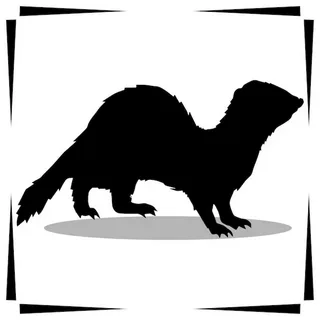
- Smooth out the curves of the back and belly.
- Add slight definition to the shoulder and hip areas.
- Sketch the ears as small, rounded triangles on the top sides of the head.
- Define the paws, adding tiny toes or claws if desired.
4. Add Features and Fur Texture
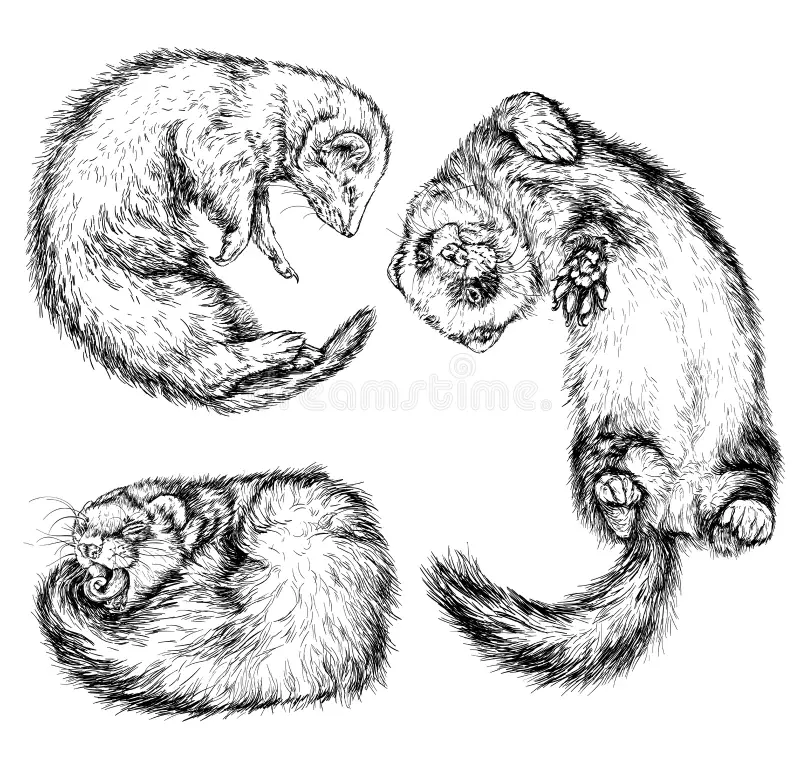
Fill in facial details: bright eyes with pupils, whiskers radiating from the nose area, and subtle lines suggesting a mouth. Lightly sketch short, curved strokes around the neck, cheeks, and tail to suggest fur texture. Indicate any markings (like a dark mask or tail tip) with gentle shading.
5. Finalize and Shade
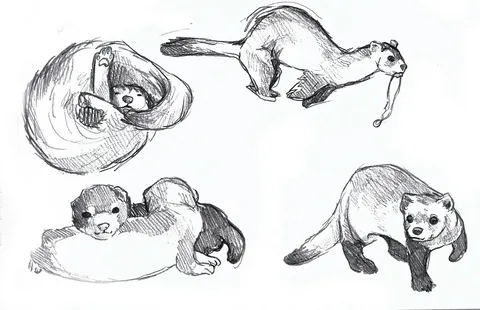
Once satisfied with the outlines, darken your lines and erase the underlying construction lines. Add shading beneath the belly and along the underside of the tail for depth. Shade the eyes, dark patches of fur, and paws. If you’re coloring, use browns, creams, blacks, and grays to match real ferret coloring.https://www.reddit.com/r/ferrets/comments/1gb9l59/ill_draw_a_sketch_of_your_ferret_for_free_rules/
Tips for Realistic Ferret Drawings
- Reference Real Ferrets: Use high-quality photos or pause videos to study anatomy and fur patterns.
- Practice Gesture Drawing: Quickly sketch loose poses to capture the fluidity and energy of ferrets before diving into detailed drawings.
- Keep Proportions in Mind: Ferrets have relatively small heads compared to their long bodies and tails.
- Focus on Expression: A slight tilt of the head or shift in the eyes gives your drawing personality.
- Use Layered Pencil Strokes: When shading fur, build up layers slowly to achieve softness and dimension.
Common Mistakes to Avoid
- Making the Body Too Stiff: Ferrets are known for their flexible, curving forms. Avoid straight lines and unnatural angles.
- Oversizing the Head: Beginners often make the head too large compared to the slim body.
- Neglecting the Tail: A ferret’s tail is an important part of its silhouette—don’t forget to include it in proportion and shape.
- Skipping Underlying Structure: Jumping straight into details without first mapping basic shapes often leads to awkward proportions.
Creative Ideas for Ferret Art
Looking to take your ferret drawing further? Try:
- Cartoon Ferrets: Exaggerate big eyes, cheeky grins, or mischievous body language.
- Ferret Superheroes: Give your ferret a cape and mask in a comic-style pose.
- Ferrets in Nature: Place your ferret in a tunnel, curled among leaves, or climbing over logs.
- Fantasy Ferrets: Add wings, magical accessories, or place them in enchanted forests.
- Ferret Portraits: Focus on a close-up of the face, capturing eye shine and unique markings.
Conclusion
Ferrets are wonderful muses for artists. Their unique forms, lively personalities, and cute features make them the perfect subjects for practice and creativity. https://furryferrets.com/ferret-or-seal-15-times-ferrets-looked-sea-seals/Whether you’re aiming for realism, whimsical cartoons, or fantasy scenes, drawing ferrets will boost your confidence, sharpen your skills, and fill your sketchbook with charm. So pick up your pencil, find some references, and let your imagination run wild—your ferret art journey is just beginning!
Frequently Asked Questions
Q1: What is the best medium for drawing ferrets?
Pencil and paper are perfect for beginners, allowing easy corrections. Digital tools like Procreate or Photoshop are great for adding color and texture layers
Q2: How can I improve my ferret drawings?
Draw often, study real ferrets, and practice quick gesture sketches. Use reference photos and focus on anatomy before adding details.
Q3: Can I sell ferret drawings?
Yes! Many artists create stickers, prints, or commissions of ferret art. Make sure your work is original or based on your own photos.
